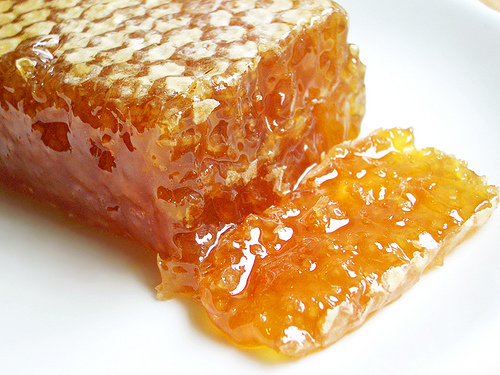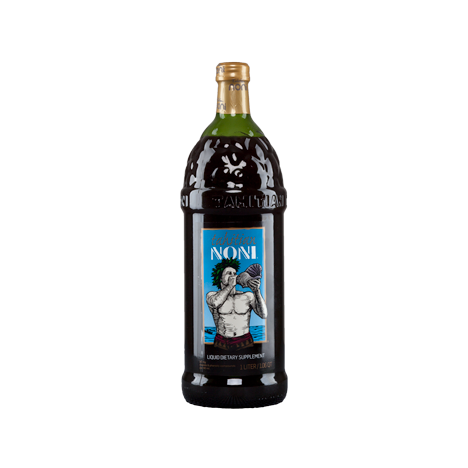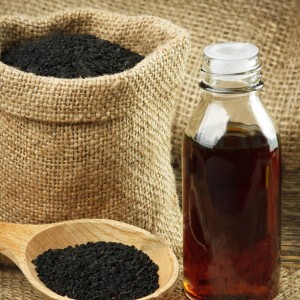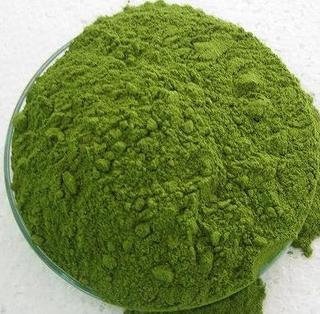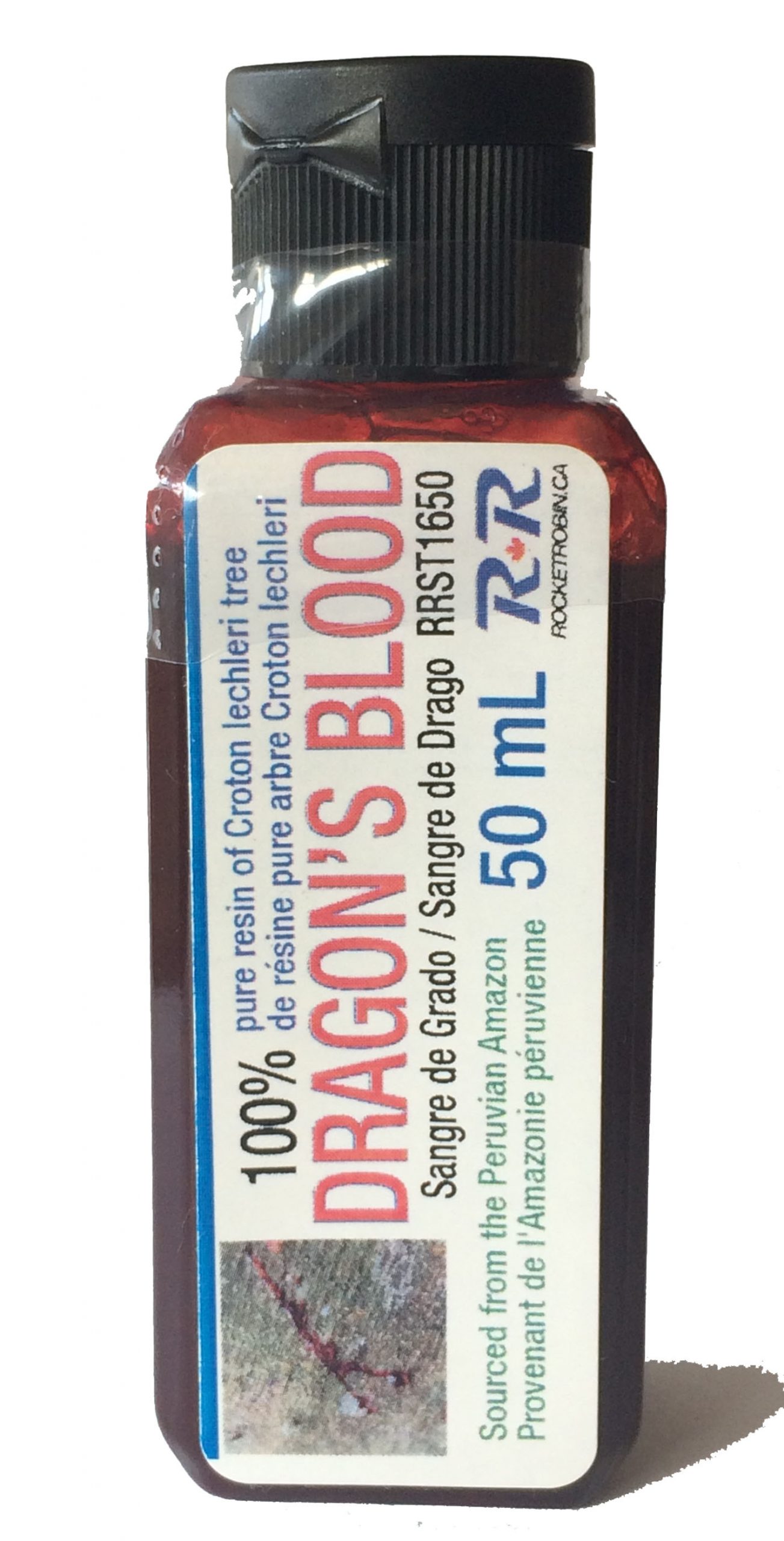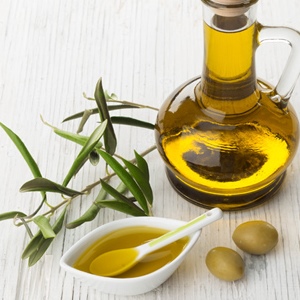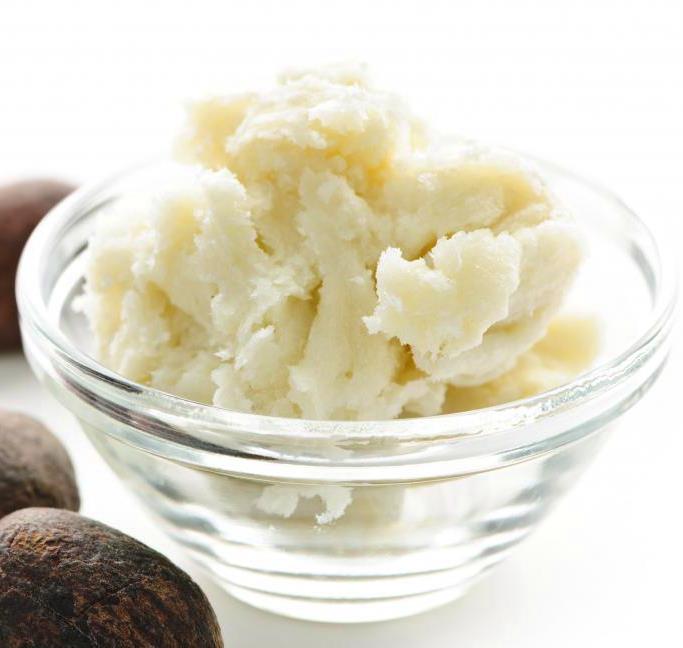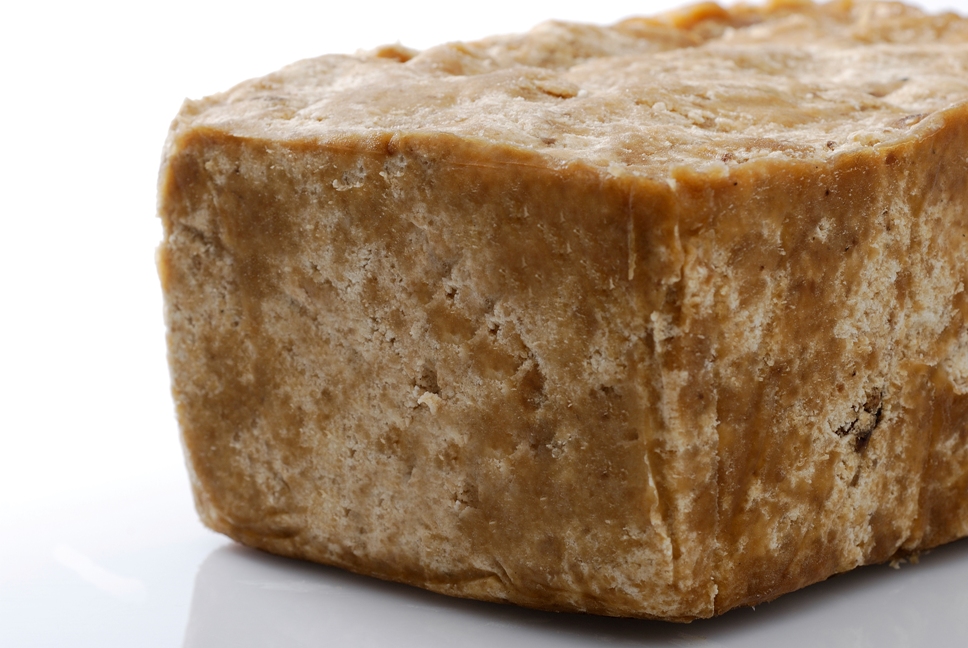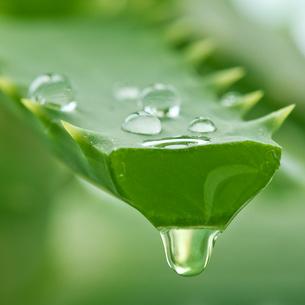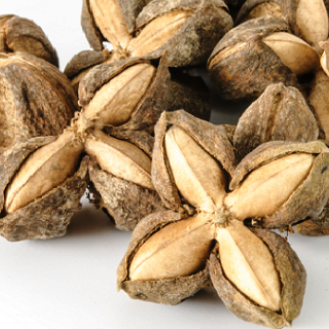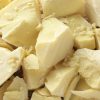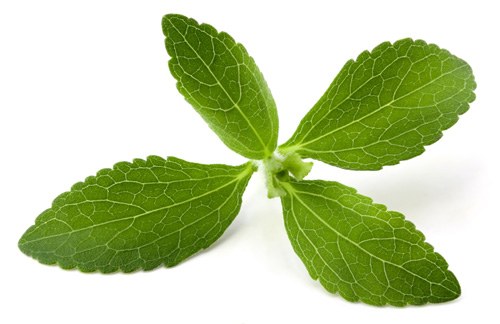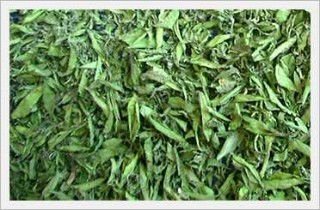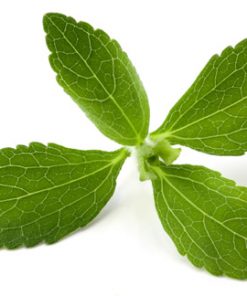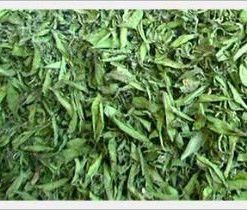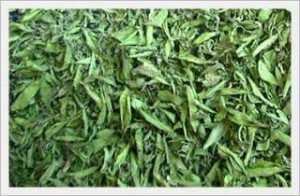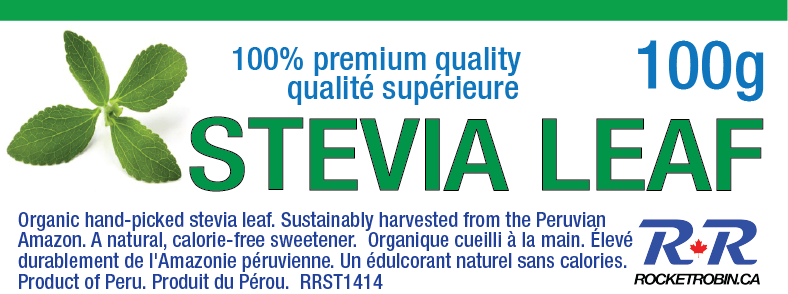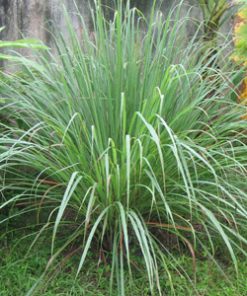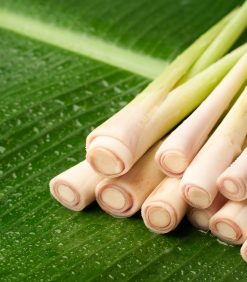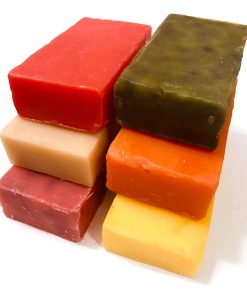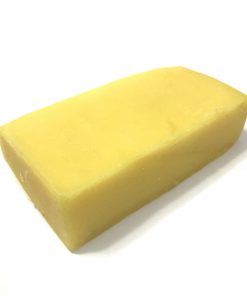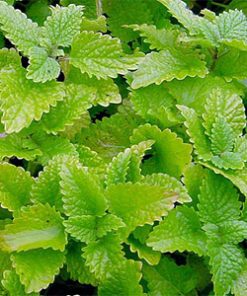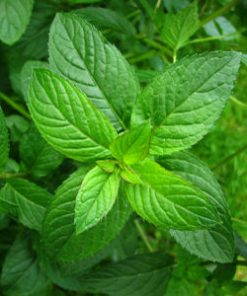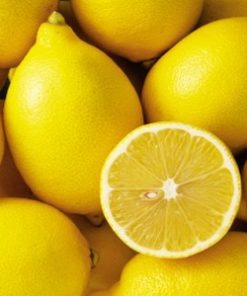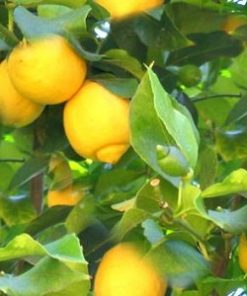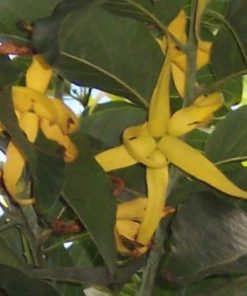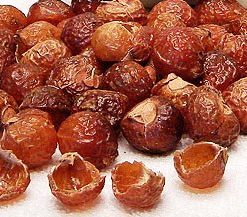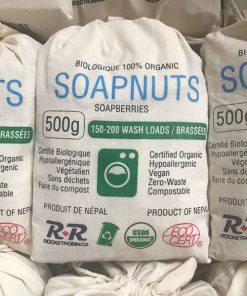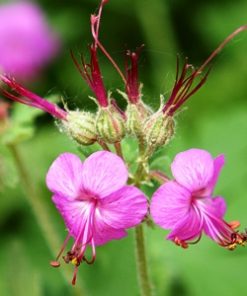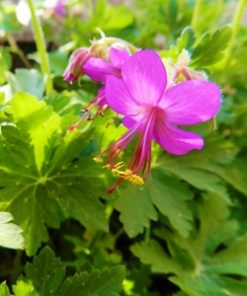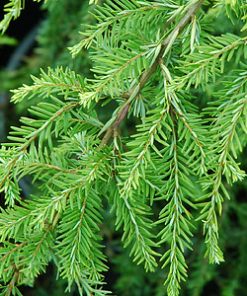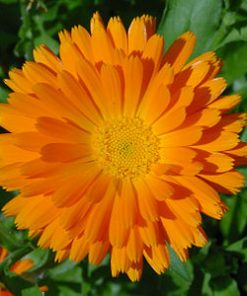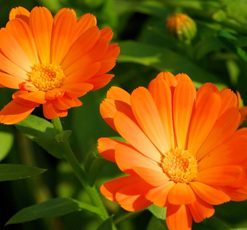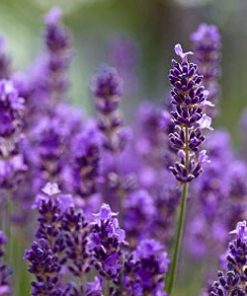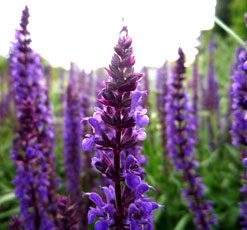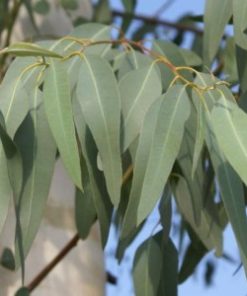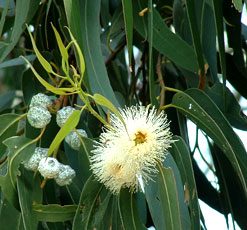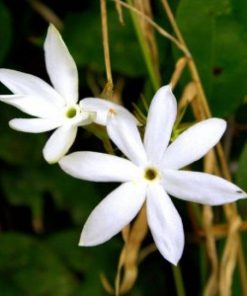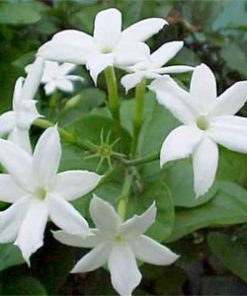Description
Stevia Leaf – Dried Leaf from Peruvian Amazon (100g)
Stevia Leaf – Dried Leaf sustainably harvested in the Amazon Rainforest in Peru. Sweet stevia leaves with High Rebaudioside A Content (10% – 12%).
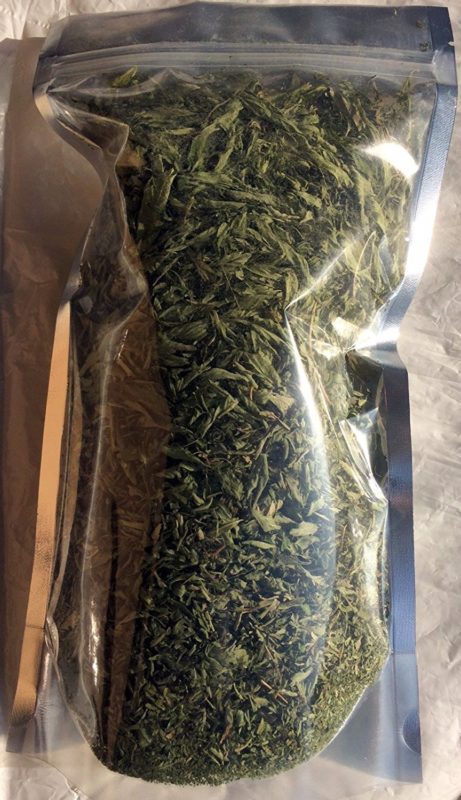
- FROM NATURE not a Laboratory! Sustainably Harvested from the Peruvian Amazon. Less than 8 cents per gram.
- A natural, calorie-free sweetener approximately 200 to 300 times as sweet as sugar
- Use dry stevia leaves to make a powdered sweetener or to make a syrup for sweetening beverages, sauces or baked goods.
- Great for diabetics and dieters alike to reduce their sugar intake and improve health.
- The best stevia to use is the unprocessed dried green stevia leaf, either whole leaves or in powder form
The stevia leaves and herbal powder, which is ground up leaves, are reported to be 10-15 times sweeter than table sugar. The refined extracts of Stevia called steviosides (a white powder, 85-95% Steviosides) may be up to 200-300 times sweeter than table sugar, but they are devoid of nutrients like refined sugar, and processing of the leaves is questionable, changing the color from green to white. Raw herbal Stevia contains nearly one hundred identified phytonutrients and volatile oils, including trace amounts of Rutin (from the Callus) and B-Sitosterol (from the leaves).
The Advantages of Stevia
1. Has no calories.
2. Suitable for diabetics, in fact the glycosides are not absorbed in the digestive system at all.
3. Reduces the blood sugar level.
4. Prevents the accumulation of dental plaque.
5. Reduces the appetite by diminishing the sensation of hunger.
6. Unaffected by heat and acidity; does not lose its structure and composition, as opposed to artificial sweeteners.
7. Does not promote fermentation and or the growth of bacteria.
8. Does not lose its color when heated (to sum up the physiological and chemical properties: stevia is relatively stable in comparison to sugar substitutes and other sweeteners).
9. Relieves stomach pain.
10. Helps lower blood pressure.
11. An anti-fungal and treatment for candida.
12. Treatment for burns and cuts.
13. Treatment for mouth sores and aphthous stomatitis.
14. Treatment for athletes’ foot.
(Pregnant woman should not use stevia)
The Whole-Leaf Stevia Difference
Many commercial drink mixes and packaged sugar substitutes are sweetened with a derivative of stevia. This sweetening compound is called Rebaudioside A and is listed on labels as either Reb A or Rebiana. These are highly processed products developed by large food corporations. Most of the raw stevia used to produce these products is grown in China. These “natural sweeteners” have been stripped of many of the plant’s healthful properties. Teas, extracts and tinctures made from high-quality, whole-leaf stevia, on the other hand, contain up to seven sweet compounds (glycosides) and an array of antioxidants.
Stevia – The Safe Sweetener! The best stevia to use is the unprocessed dried green stevia leaf, either whole leaves or in powder form.
HOW TO USE STEVIA
Stevia offers sweet taste without impacting blood glucose levels. Stevia leaves can be dried or crushed to replace sugar in teas, sorbets and more.
A natural, calorie-free sweetener approximately 200 to 300 times as sweet as sugar? Sounds too good to be true, but it’s not — it’s stevia. This ultra-sweet plant originated in South America, but it’s been used in many countries for hundreds of years as a natural sweetener. Using stevia in place of sugar can cut calories and may keep your blood glucose level more stable. Whether you’re diabetic or just looking for a natural alternative to white sugar, saccharin or aspartame, stevia is a good choice.
Use dry stevia leaves to make a powdered sweetener. Bundle and hang fresh stevia plant stems upside down in a warm, dry location until the leaves are thoroughly dry, then strip the leaves from the stems. Fill a blender, food processor or coffee grinder to half full with dry leaves and process at high speed for a few seconds. Store the powdered sweetener in an airtight container. Use the powder in recipes that call for a sweetener, but make adjustments in the amount used due to its dense sweetness. A general rule of thumb is that 2 tablespoons of stevia powder equals 1 cup of sugar.
Use dry stevia leaves to make a syrup for sweetening beverages, sauces or other syrups. Add one cup of warm water to one-quarter cup of fresh, finely crushed stevia leaves. Put the mixture in an airtight container and allow it to set for 24 hours before straining the leaves from the mixture. If desired, you can cook the strained mixture on low heat, reducing it to a more concentrated syrup. The syrup should last for several years, if kept in an airtight container in your refrigerator.
Ground Stevia is excellent when sprinkled lightly over cooking vegetables and meats, and salads. Besides adding its own sweet taste it significantly enhances the flavor and nutritional value of the food. Ground Stevia can be used in many cooking and baking applications.
Quality Stevia leaves are a nutritious, natural dietary supplement offering numerous health benefits. Besides its intense sweetness various studies have found the leaf to contain proteins, fiber, carbohydrates, iron, phosphorus, calcium, potassium, sodium, magnesium, zinc, rutin (a flavonoid), true vitamin A, Vitamin C and an oil which contains 53 other constituents.
You can make your own Stevia Extract! A liquid extract can be made from the whole Stevia leaves. Simply combine a measured portion of Stevia leaves or herbal powder with pure USP grain alcohol (brandy or scotch will also do) and let the mixture sit for 24 hours. Filter the liquid from the leaves or powder residue and dilute to taste using pure water. Note that the alcohol content can be reduced by very slowly heating (not boiling) the extract and allowing the alcohol to evaporate off.
A pure water extract can be similarly prepared, but will not extract quite as much of the sweet glycosides as will the alcohol. Either liquid extract can be cooked down and concentrated into a syrup.
Stevia is of the Composite family, related to lettuce, marigold and chicory. It was “officially” discovered in the late 19th century by Dr. Moises Santiago Bertoni. He was given samples of the plant and he reported that “one small piece of the leaf will keep the mouth sweet for an hour”. He named the plant Stevia Rebaudiani Bertoni in honor of a Paraguayan chemist name Rebaudi. Bertoni found that the Guarani Indians had been using the leaves of the plant to sweeten bitter teas and as a sweet treat.
Stevia has been used since pre-Colombian times with no reports of ill side affects. Stevia has also withstood years of research that has proven Stevia to be safe for human and animal consumption.
OTHER HEALTH BENEFITS
Native to Paraguay and other tropical areas of the Americas, the stevia plant (Stevia rebaudiana) produces leaves packed with super-sweet compounds that remain stable even after the leaves have been dried. Stevia leaves have been used to sweeten teas and beverages throughout South America for centuries. More recently, diabetics and dieters alike have turned to stevia to reduce their sugar intake because, unlike honey, maple syrup, agave or molasses, this natural sweetener has zero calories and is not metabolized by the body. Stevia is especially well-suited to sweetening drinks, fruits, salad dressings, yogurt and most creamy desserts. Stevia can substitute for some, but not all, of the sugar used when baking, because it does not provide all of the multiple functions that sugar does.
Various properties and general information:
1. Various studies have shown that stevia is suitable for use by people suffering from diabetes. Even after years of stevia consumption in the West, no undesirable effects have been observed; it has become apparent that the plant has no chronic or acute toxicity, and is also suitable for human consumption as a sweetener.
2. A dosage of 250 mg of dried stevia per day is useful for:
Treating hypertension
Reducing blood sugar levels
Does Stevia have any effect on hypoglycemia? According to the report Effect of the Stevioside and of the aqueous extract of Stevia Rebaudiana (BERT) Bertoni on the glycemia of normal and diabetic rats By: Professor Carlos Eduardo Pinheiro, Presented to the II Brazilian Convention on Stevia rebaudiana (Bert) Bertoni – September 1982, they found that the use of Stevia did not produce any significant glycemic effects in normal or diabetic rats. In other words, stevia does not add sugar to the blood stream as sugar or even fruit can do.
Stevia replaces sugar in your diet! Refined sugar is virtually devoid of nutritional benefits and, at best, represents empty calories in the diet. At worst, it has been implicated in numerous degenerative diseases. Stevia is much sweeter than sugar and has none of sugar’s unhealthy drawbacks.
NOW SOLD IN 33% LARGER 100g PACKS!
Packed in re-sealable zipper stand up pouches. Keep in a cool place. I can accommodate custom orders or arrange wholesale pricing.
TRUST ROCKET ROBIN
Rocket Robin is proud to be your supplier of truly natural products with simple ingredients in support of your family’s health and well-being.
Additional information
| Weight | 0.15 kg |
|---|---|
| Dimensions | 26 × 14 × 8 cm |

